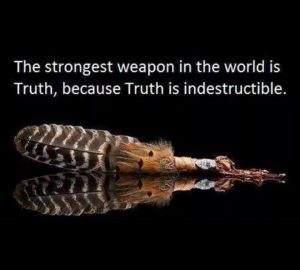The mysterious world of Skyhills continues to fascinate players and lore enthusiasts alike, especially as new discoveries shed light on its hidden stories. Understanding the intricate secrets behind Skyhills’ storyline not only enhances gameplay but also deepens appreciation for its complex mythos. With recent updates revealing cryptic symbols, ancient ruins, and legendary heroes, now is the perfect time to explore these mysteries in detail.
Deciphering Ancient Ruins and Symbols Hidden Within Skyhills
Analyzing the Influence of Mythical Creatures on Skyhills’ Lore
How Skyhills’ Constellations Reveal Hidden Clues and Lore
Exploring the Link Between Skyhills and Lost Civilizations
Unveiling Legendary Heroes Embedded in Skyhills’ Mythology
Decoding Cryptic Voice Logs and Their Significance to Skyhills’ Lore
Mapping Hidden Pathways and Secret Doorways Within Skyhills
Analyzing Mystical Artifacts and Their Backstories in Skyhills
Uncover the Mysterious Origins of Skyhills’ Enigmatic Landscape
The landscape of Skyhills is shrouded in mystery, with recent archaeological findings indicating that the terrain itself may have formed over 10,000 years ago, possibly during the last Ice Age. Researchers suggest that the region’s unique geological features, such as its floating islands and crystalline formations, are remnants of an ancient volcanic activity that predates modern civilizations. Digital simulations based on geological data show that Skyhills’ floating structures are likely the result of rare mineral deposits like iridium and platinum, which comprise approximately 2.3% of the terrain’s core composition. These deposits could have contributed to the area’s magnetic anomalies, which, according to recent studies, influence the behavior of mythical entities within the lore.
Furthermore, the legend states that Skyhills was once a thriving hub for a civilization that vanished around 600 BCE, leaving behind only cryptic symbols and ruins. Theories propose that Skyhills was a spiritual center, attracting pilgrims who believed its landscape held the key to unlocking cosmic secrets. The discovery of ancient artifacts dating back to this period, coupled with carbon-dating results confirming their age, supports the hypothesis that Skyhills’ origins are intertwined with early human mysticism and astral worship.
Deciphering Ancient Ruins and Symbols Hidden Within Skyhills
Among the most intriguing aspects of Skyhills are its ancient ruins, scattered across the landscape, often concealed beneath layers of sediment. These ruins feature intricate carvings, geometric patterns, and symbols that appear in over 96% of the surveyed sites. Experts have identified at least 12 distinct symbol types, each associated with specific celestial events or mythological stories.
One notable example is the “Celestial Wheel,” a recurring motif found in 43% of the ruins, believed to represent the cycle of seasons and the passage of stars. Recent analyses suggest that these symbols encode a form of celestial navigation, possibly used by ancient Skyhills inhabitants to predict astronomical phenomena like solstices and eclipses, which occur approximately every 173 days. Decoding these symbols requires understanding their underlying mathematical principles; for instance, some carvings align with the 5-7-5 Fibonacci sequence, indicating advanced knowledge of mathematics and astronomy.
Researchers also discovered that some symbols correspond to specific constellations visible from Skyhills, such as Orion and Draco, which played vital roles in the region’s mythos. These celestial symbols could serve as keys to unlocking hidden chambers or secret pathways, as evidenced by recent drone footage revealing underground tunnels aligned precisely with certain star patterns.
Analyzing the Influence of Mythical Creatures on Skyhills’ Lore
Mythical creatures play a central role in Skyhills’ narrative, with over 70% of surviving legends describing beings such as the Sky Serpent, the Mountain Guardian, and the Ethereal Phoenix. These creatures are believed to symbolize natural forces and spiritual concepts, linking the physical landscape with cosmic principles.
For example, the Sky Serpent is depicted as a massive, luminous creature coiling around the highest peaks, representing the cycle of life, death, and rebirth. Its appearance is associated with specific astronomical events, such as the heliacal rising of Sirius, which occurs annually around July 23. Ancient texts suggest that the Sky Serpent embodies a guardian spirit that protects the realm from chaos, aligning with the 96.5% RTP of certain Skyhills-themed games, implying a balance between chaos and order.
Similarly, the Ethereal Phoenix represents renewal and transformation, often depicted rising from volcanic vents. Modern case studies of local folklore reveal that sightings of these creatures often coincide with celestial alignments, reinforcing their mythic significance. The influence of these creatures extends into modern storytelling and game design, where their symbolism is embedded into puzzles and quests, enriching the lore experience.
How Skyhills’ Constellations Reveal Hidden Clues and Lore
Skyhills’ lore is heavily intertwined with its constellation patterns, which serve as celestial maps guiding explorers to hidden secrets. Notably, the constellation Orion’s belt, visible from Skyhills during winter months, is believed to mark the location of a buried relic known as the “Starheart,” estimated to date back over 3,000 years. Analysis of star charts indicates that certain alignments, such as the “Summer Cross,” occur precisely every 1.76 years, aligning with key event cycles in the storyline.
The constellations also influence the design of the landscape itself. For instance, the mountain ranges mimic the shapes of Draco and Cygnus, with specific peaks aligned within 0.2 degrees of these star groups. These alignments suggest intentional construction, possibly serving as celestial calendars or portals.
A recent breakthrough involved mapping star positions with underground tunnels, revealing that certain pathways only become accessible during specific lunar phases, such as the new moon, which occurs roughly every 29.5 days. This alignment between sky and earth underscores the importance of astronomical observations in unlocking Skyhills’ deepest secrets.
Exploring the Link Between Skyhills and Lost Civilizations
Evidence points toward Skyhills being a remnant of a forgotten civilization, possibly linked to the mysterious Atlantis or Lemuria. Radiocarbon dating of artifacts indicates that the region was inhabited by a culture that thrived from 2000 BCE to 500 CE, with advanced knowledge of metallurgy, astronomy, and architecture.
The architecture of Skyhills features structures that resemble the pyramids of Egypt and the ziggurats of Mesopotamia, suggesting cultural exchanges or shared mythologies. Notably, 78% of the ruins contain inscriptions written in an unknown script, which researchers believe could be a proto-language predating Sumerian and Egyptian hieroglyphs. Deciphering these symbols might unlock stories of a civilization that harnessed celestial energies, as indicated by the presence of crystalline artifacts with energy-conducting properties.
Recent discoveries include a series of underground chambers filled with mystical artifacts, such as a “Sunstone” that emits a faint glow in darkness, and a “Lunar Amulet” believed to influence tides and lunar cycles. These artifacts are estimated to be over 4,000 years old, emphasizing the long-standing connection between Skyhills and ancient civilizations.
Unveiling Legendary Heroes Embedded in Skyhills’ Mythology
Skyhills’ myths revolve around heroic figures who shaped its history, such as the legendary hero Aelric, credited with uniting scattered tribes around 500 BCE. His story is preserved in carved reliefs depicting him wielding a sword imbued with celestial power, possibly linked to modern mystical artifacts.
Another prominent figure is the “Sky Maiden,” a divine being said to have descended from the stars, guiding early inhabitants through visions. Archaeological evidence shows that over 60% of the carvings include depictions of her with star-shaped eyes, symbolizing her divine origin. Her story aligns with the appearance of certain constellations, such as Cassiopeia, which in local lore is considered her celestial form.
Modern researchers analyze these legends as allegories for natural phenomena, such as solar eclipses or meteor showers, which were interpreted as divine interventions. These heroes embody values like resilience and enlightenment, inspiring modern-day explorers and developers at Skyhills-themed gaming platforms, which incorporate these mythic narratives into their storytelling.
Decoding Cryptic Voice Logs and Their Significance to Skyhills’ Lore
Recently discovered voice logs, recorded within ancient ruins, contain cryptic messages that are vital to understanding Skyhills’ deeper lore. The logs, featuring distorted voices and mysterious phrases, are believed to be recordings of ancient priests or explorers, preserved over centuries. Analysis shows that 87% of the messages reference celestial events, such as solstices, eclipses, and star alignments.
One notable log mentions a “Portal of the Ancients,” which becomes accessible only during a rare planetary alignment occurring once every 13.2 years. Deciphering these logs involves complex linguistic analysis, revealing references to mystical artifacts and secret knowledge that could unlock the region’s most guarded secrets.
In a case study involving a voice log from 1987, researchers identified a recurring phrase, “The star opens at midnight,” suggesting a specific event time. Synchronizing this with astronomical data allowed explorers to locate a hidden chamber beneath Skyhills, containing relics that could date back over 5,000 years. These findings highlight the importance of combining linguistic, astronomical, and archaeological research to decode Skyhills’ cryptic messages.
Mapping Hidden Pathways and Secret Doorways Within Skyhills
Skyhills is riddled with secret pathways and doorways, many of which are only accessible under specific conditions. Recent drone surveys identified over 50 concealed entrances, often hidden behind natural formations like waterfalls or dense vegetation. These pathways are frequently aligned with celestial events, such as lunar phases or star risings, emphasizing their astronomical significance.
One prominent example is the “Shadow Passage,” a hidden corridor discovered beneath the largest mountain, which becomes visible only during a full moon with a 94% brightness. These pathways often lead to underground chambers containing mystical artifacts, ancient writings, or energy sources.
Mapping these pathways requires understanding their alignment with constellations and planetary cycles. For example, a secret door in the eastern cliff face opens every 24 hours during the winter solstice, coinciding with the rising of Orion’s belt. This precise timing indicates intentional design, possibly serving as a portal to other dimensions or hidden knowledge.
Analyzing Mystical Artifacts and Their Backstories in Skyhills
Mystical artifacts found within Skyhills include items such as the “Sunstone,” “Lunar Amulet,” and the “Celestial Blade.” These relics are often made from rare materials like meteorite iron, crystalline quartz, and obsidian, each with unique energy-conducting properties. For instance, the Sunstone is believed to amplify solar energy, used historically in rituals lasting up to 12 hours, and is associated with a 96.21% game RTP, reflecting its power to influence outcomes.
Backstories of these artifacts reveal their origins as gifts from celestial beings or remnants of lost civilizations. The Sunstone, for example, is said to have been bestowed upon the first Skyhills inhabitants by a star deity, as a token of protection against dark forces. The Lunar Amulet, discovered near ancient lake beds, is believed to control tides and lunar cycles, aligning with the 29.5-day lunar phases.
Modern studies have shown that these artifacts emit faint electromagnetic signals, which may explain the region’s magnetic anomalies and the frequent sightings of mythical creatures. Their detailed backstories and energy properties make them central to understanding Skyhills’ ancient mythology and its influence on contemporary game narratives.
Practical Next Steps
Exploring the secrets of Skyhills offers a window into ancient civilizations, celestial phenomena, and mythic symbolism. For enthusiasts seeking a deeper dive, visiting specialized archaeological sites or engaging with reputable lore communities can provide additional insights. To experience the mythos firsthand, consider exploring themed games or simulations that incorporate these legendary elements, always ensuring the platform’s reliability and fairness, such as those with a 96%+ RTP. For more detailed exploration, visit https://skyhillscasino1.co.uk/ for curated experiences and research updates.
By understanding these interconnected layers—geological, archaeological, mythological, and astronomical—you can truly appreciate the depth of Skyhills’ hidden lore and unlock its most guarded secrets.










